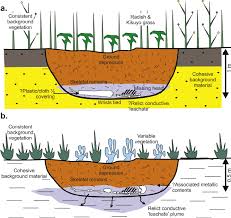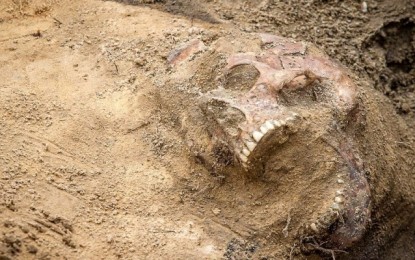FOLLOWING the news of 32 bodies and nine human heads found in clandestine graves in southern Mexico on 25th November 2016, I decided to share my notes on clandestine graves; characteristics of the criminals who act within them, characteristics of the graves, and how to spot them.
clan·des·tine. The definition of clandestine is something that is done in secret.
A meeting in a hidden location is an example of clandestine.
Moreover, the characteristic of the criminal who acts on this basis is the logical place to start. The criminal theoretically operates within a “principle of least effort”, meaning we assume they would do what is easiest. Therefore, the majority of corpses are in shallow graves. This is mainly due to the “fear of light” and the “fear of time”; according to these principles, it is unlikely the burial was carried out slowly in broad daylight. Another principle the criminal would act under is the “path of least resistance” whereby the body would be dumped within a short distance of the murder scene, especially when surrounded by rugged terrain. Otherwise, bodies are also generally found on the right side of the road (if the driver is on the left of the car) where the body has been pushed out of the passenger side.
Spotting methods:
- Once the body beings to decompose, especially during the initial decay and putrefaction stages, the nutrients in the body leech into the surrounding soil and promote plant growth.
- Vegetation surrounding the grave will be destroyed by digging and the uppermost soil will be fresh, perhaps with extra soil on the side from the volume taken up by the body.
- As the body bloats, because of the gases released during decomposition, the ground will balloon upwards in a rainbow shape.
- Likewise, as the body skeletonises, in the final process of decomposition, the ground shows a depression in the same shape, especially in the void stomach cavity.
- Due to decomposition, more plants will grow around the grave, resulting in varying heights of plants in the area (see picture). This is harder to identify if the body

- is in a casket (or some variation thereof e.g. a plastic bag) because the body is unable to decompose properly and the nutrients are trapped inside.
- Soil layers are the best giveaway of a clandestine grave because the soil layers are mixed up by digging and cannot but put back again in order.
Finding clandestine graves requires knowledge, skill and man power and is generally very difficult to do unless you have the latest technology and scientific research. Over time, around the perimeter of the burial pit, one would see a depression around the edges where the soil falls in and pulls at the side. A secondary depression would occur where the stomach cavity was.
Other ways to find clandestine graves is using technology such as a metal detector or ground penetrating radar. However, a metal detector can only be used if the body has metal on it for the detector to find and ground penetrating radar requires computer output and is expensive. Sniffer dogs and and a foot search are alternatives to these methods. Sniffer dogs are trained to identify the smell of decomposition but can only smell into a prevailing wind. A foot search can be carried out easily by a large group of people doing a visual search. This is a systematic search where the group walks in a straight line (if in a certain type of terrain e.g. a corn field) or in a serial shape (e.g. in a forest where there are trees in the way of a straight search). A foot search is cheaper but requires lots of manpower and is limited by daylight and weather.
To make the approach systematic to finding the burial site, the forensic team would set out a permanent Datum (or marker) and all the data is taken from this point or a grid system, such as using a quadrat, is used. The site is clearly labelled on a map as well as the orientation of all the skeletal elements with red or pink flags. Line drawings are also taken to appreciate the relative positions. Excavation is made using the pedestal approach which is where the excavators remove soil from around the body so it is on a raised platform or ‘pedestal’. It is only after detailed documentation (including both black/white and coloured photography because they each reveal different information) that the elements can be removed and examined to determine the cause of death and identify the remains.

Hey, I found your little space in the community pool, so glad I did!! amazing write up!!!keep writing and inspire us….
Please do visit my blog when time permits, thanks in advance and see you there!
LikeLike
Thank you so much and I am on my way!
LikeLike
I, too, operate within a principle of least effort.
Really unique and cool blog concept. I know that it can difficult to make “science-y” topics interesting to a general audience, but I think you’re doing a pretty good job of it.
LikeLike
Haha thank you @sarahbruso
LikeLike
I found this post, after watching the investigator in the JJ and Tylee Homicides, when Hermisillo(sp) was asked by the defense what a clandescent grave is. When the detective started answering, the defense objected to his answer stating that he was going beyond the scope of the question, but GOOD on the detective, because he had to school Mr. Prior and the judge agreed.
LikeLike